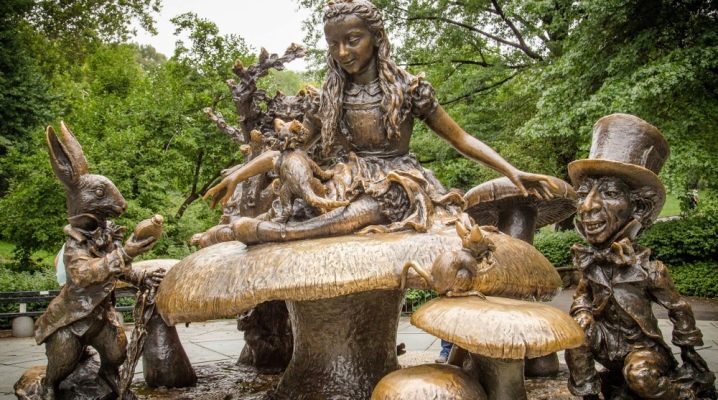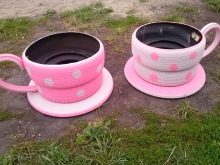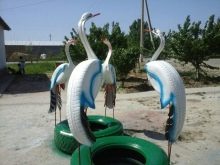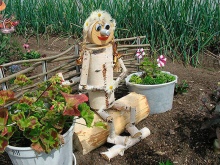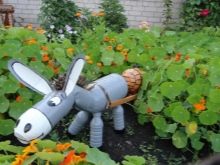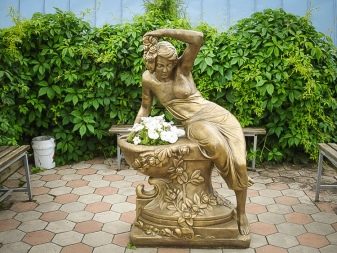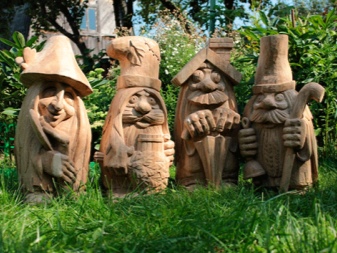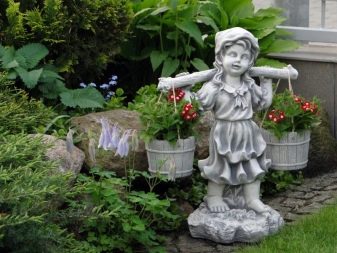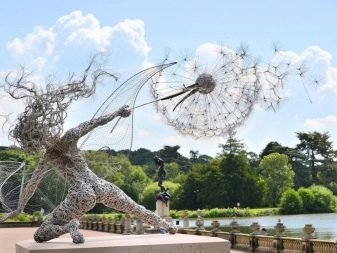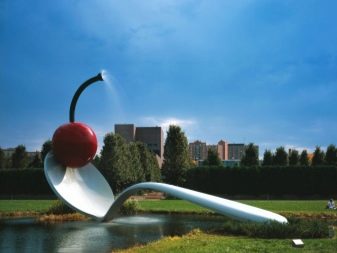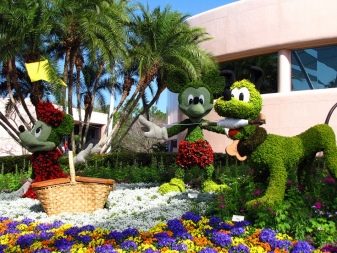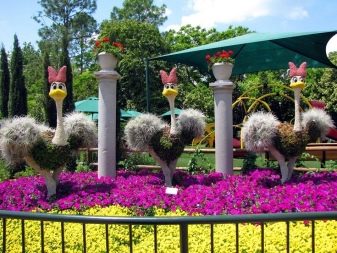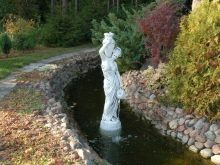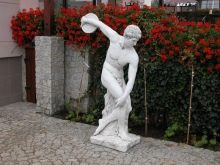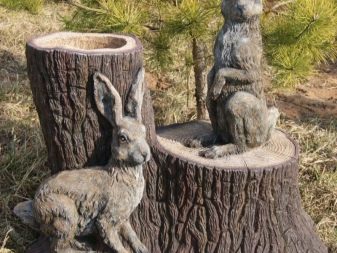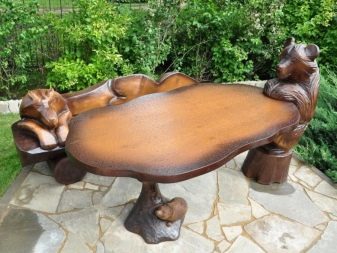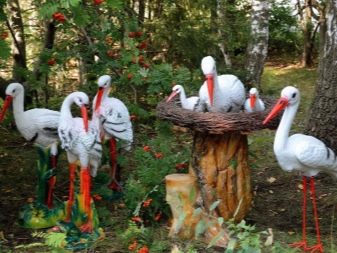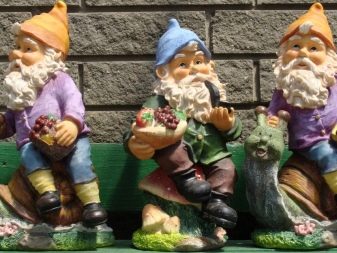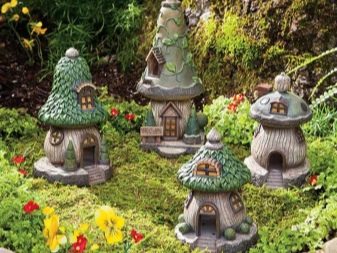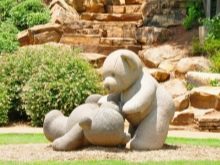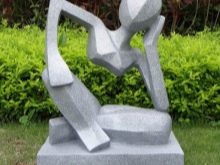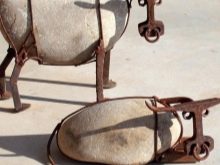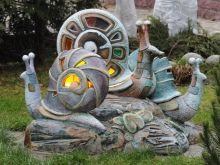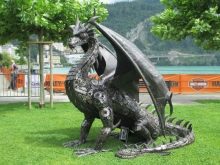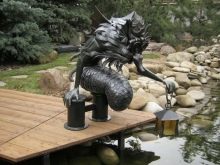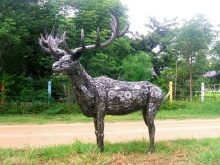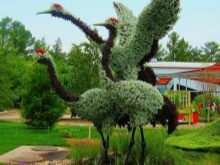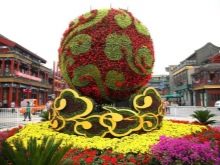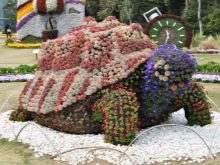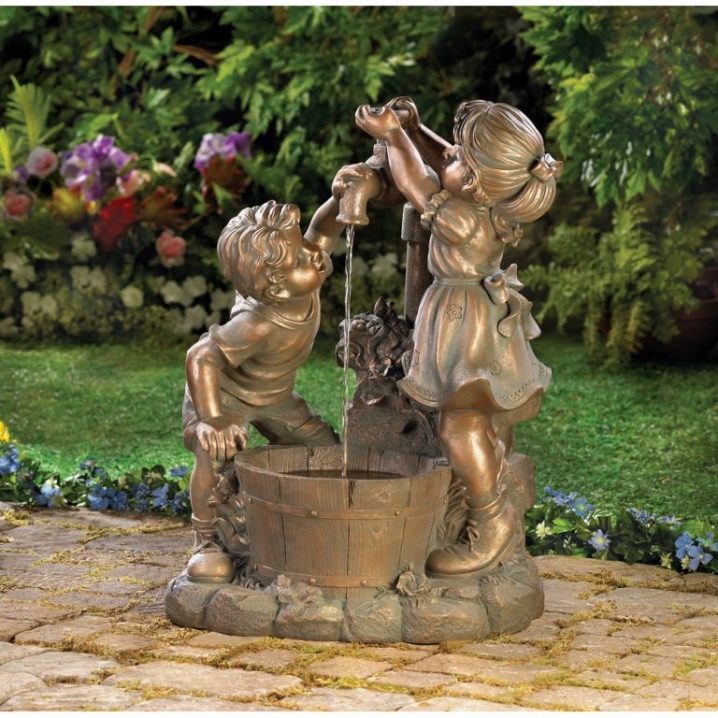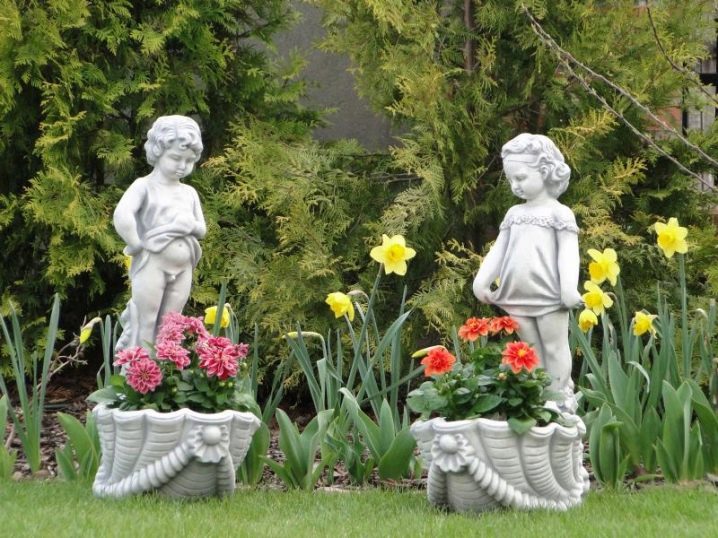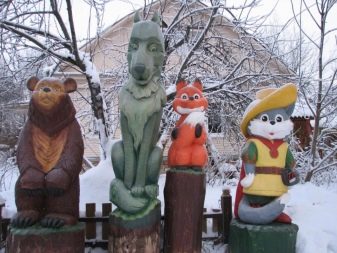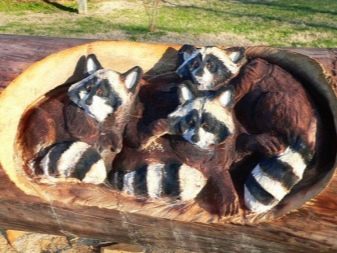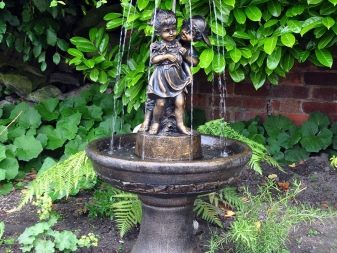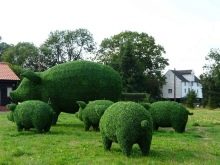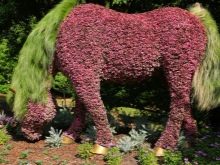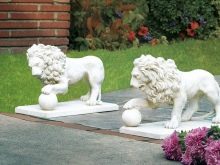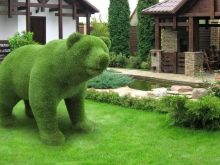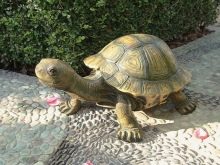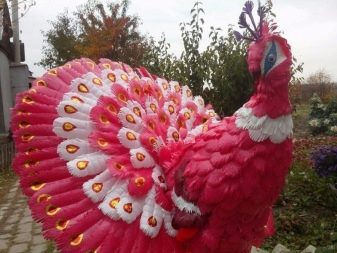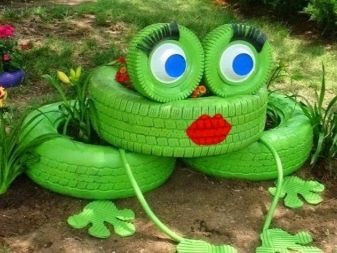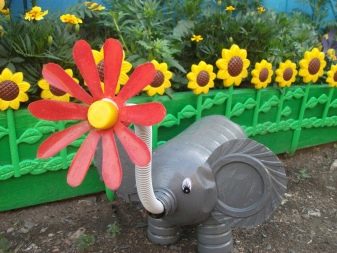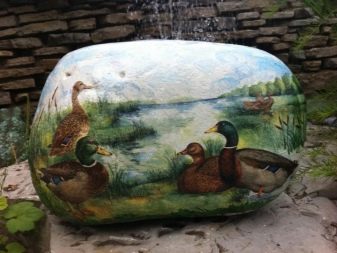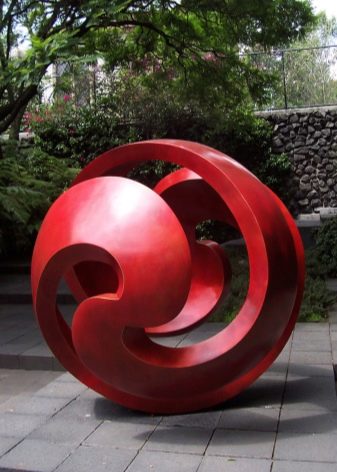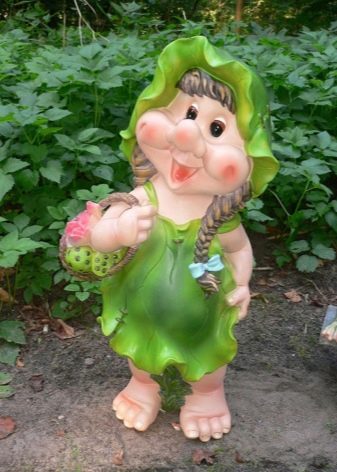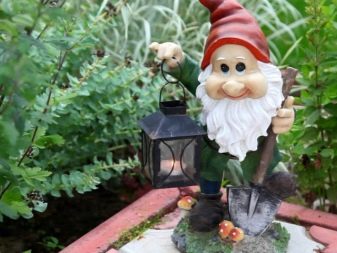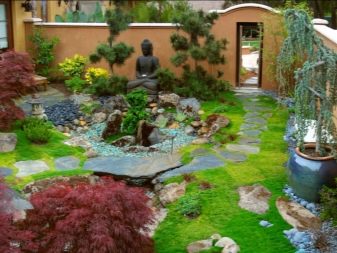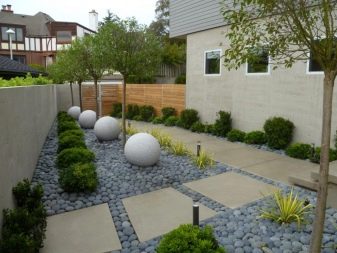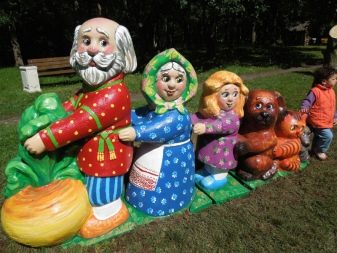Garden sculptures for summer cottages and parks
Making a garden plot, it is necessary to pay due attention not only to plants, but also to decorative elements. Manufacturers offer an extensive range of decorations for the dacha or park: lights, fountains, fences, original flowerpots, pots. However, the most refined and interesting elements of the decor are garden sculptures, which set the basis for stylistics and dress up the site.
How to choose?
Modern garden sculptures are distinguished by a variety of sizes and shapes: they are in the form of animals, people, geometric shapes, abstract objects. In the manufacture of these products use different raw materials. The most creative home-made materials are plastic bottles, car tires, stumps, snags and stones.
Choosing a wooden, metal or plaster figure, focus on the overall style of the garden, and then on the budget. Do not forget that some materials do not have a long service life. If you want something monumental that can catch your grandchildren, try to buy durable accessories.
Kinds
Garden sculptures are divided into four main types:
- Classic and Neoclassical (park sculptures of noble natural stone or metal, showing a special status);
- Small sculpture (usually from wood or polymeric compositions, surrounded by minor plastics and decorations);
- Art sculpture from modern compositions (abstract forms and shocking compositions);
- Sculptural addition from any material, the size of a different form, which is a part of a certain composition (for example, topiary).
There is the following classification of these accessories: statues, steles, monuments, obelisks. If we classify the sculptures according to style, we can distinguish antique and classical sculpture, pastoral and with a national character.
Materials
Today, sculptures for the garden are made from different raw materials.Consider the most relevant.
From wood
As a rule, these products are chosen by lovers of hand-made and families with a small budget. You can give preference to figures from the roots of a tree, old stumps or other snags. For durability it is worth covering them with a special compound.
Wood is an eco-friendly material and more “alive” in comparison with metal or concrete, therefore it harmoniously brings comfort and warmth to a kindergarten. With it, you can combine a sculpture and a bench, a sculpture and a table, creating an unusual decor item. Cutting wooden sculptures by hand, so their creation may well become your hobby. Choose an oak, pine or aspen, after carving do not forget to process the material tinting agent.
Of plaster
Figures from gypsum are quite cheap and fragile, while they look decent and beautiful, having a light tint of antiquity. If you are a classicist, choose elegant columns or statues on pedestals. If you want to add elements of fabulousness to the garden, look for small plaster figurines of fictional characters, mushrooms or other accessories. Do not forget that this decor for the home you can do yourself.
Of stone
Stone garden sculptures look luxurious, but require an appropriate frame. Various geometric shapes, pedestals, animal figures, mythical creatures, flowerpots and stone bowls in which flowers can be planted are popular. Stone blocks of natural shapes and sizes will be a fashionable solution.
To create a stone sculpture with your own hands will have to use concreterepresenting a mixture of cement and sand.
The stone in the decoration of the garden looks beautiful, but over time can lose an attractive look. It is better to turn to specialists and buy durable sculptures made of natural stone, more suited to changing temperatures and high humidity.
The option is cheaper - compositions from acrylic stone polistouna. Among the natural stones emit sculptures from marble (smooth and glowing), granite and sandstone.
Of metal
Popular figures made of metal and copper, including in urban parks. Such forged compositions are able to serve the owners for many years. They look solid and well placed on the background of buildings or gazebos, without overloading space with weight.
Vegetable
If you are inspired by European gardens, turn your attention to plant sculptures. They are a frame of wire or metal mesh, filled with soil and hay, in which selected seeds of low-growing plants and flowers are planted. After the seeds germinate, it will be necessary to cut the composition, adjusting its shape. The figure itself can be made of artificial grass. The most original solution will be a combination of different materials.
Dimensions
The size of the sculpture depends solely on the landscape design, the dimensions of the site and the overall picture. It is worth remembering one important rule: large and heavy figures are placed on the foundation in order to avoid land subsidence. If the figure is small, you can restrict yourself to the compaction of a dirt pad. Those sculptures, which decided to place on the stairs or walkways, fix by the use of reinforcement.
Colors
More often garden sculptures are performed in soothing shades - bright colors will merge with the flower-green base of the garden plot or park. Exceptions can only be in playgrounds - this is where the place for multi-colored characters and objects.
Do not forget, if the sculpture is placed on a dark background, it should be light (and vice versa). So the composition will look distinct and impressive.
The form
On the garden plots of people who are nostalgic for the past, you can often see beasts or fairy-tale wood characters (such as were popular in the USSR). Such figures are often found in playgrounds (cats, dogs or gnomes). Often they are part of the gaming complex. The traditional choice, able to fit into any landscape design, is the sculpture-fountain. It can be of various shapes and sizes, it differs in direction and force of water pressure, but it always adds elegance to the site. In classic projects, such accessories are organically combined with columns and arches.
Sculptures from plants give a vast scope for imagination. It all depends on the shape of the frame, so the area can be decorated with an abstract composition, or a silhouette of an angel, a unicorn, a football, a horse, or another form. Such compositions today are among the most sought after in landscape design.
Location
Choosing a place for garden sculpture, try to fit it into the surrounding atmosphere.If in doubt, it is better to abandon the figure, even if by itself it looks stylish and attractive. Sculpture should not always become the center of landscape composition: it is better if it becomes a neat accent.
Figures should correspond to the size of the plot, its elements (gazebos or benches), as well as individual zones. Here you need the appropriate framing of beds, groups of trees or shrubs.
In addition to sculptures on the site there are paths, arches, gazebos, gates, fences. All of them have their own unique styling. Strive to unite everything into a complete picture. When deciding on a specific point for placing the sculpture, create a sketch of it in full size on thick cardboard or other material, and then walk around the garden and think about where the accessory will look best.
Usually choose the following places: the beginning of the path, the end of the path, or existing plant compositions that require addition. Do not overdo it with an abundance of decor. Installing the sculpture in the selected location, do not forget about the coasters, which should be securely fixed.
When buying, specify whether the figure needs additional protection for the winter, as well as when and to what extent it should be treated with protective compounds.
Examples and options
Many people prefer not to throw away old things, but to turn the rubbish into a work of art with their own hands. So garden sculptures from scrap materials are born. Such figures do not differ in special beauty, but they possess sincerity and demonstrate the creativity of their creators. The results of their labors are swans, waterfalls, beetles, lanterns, mushrooms, flowers and scarecrows. It is especially convenient that such sculptures do not require any financial investments - all materials can be found in the garage or closet. Do not forget to just complete their creation with the help of bright waterproof paints.
The simplest solution is to paint large round-shaped stones, turning them into ladybirds, bumblebees and other insects. Even ordinary stones, covered with original patterns that you combine in size and size, will create a complete composition. From old clothes, bags and rags, you can build a scarecrow, which will be a highlight of the garden plot.
If you decide to purchase ready-made sculptures, base your choice on the existing style of the garden. In a small area restrict one to two figures and a few small elements. With a sufficient area, you can place on the site a series of sculptures. Abstract art sculptures made of metal and copper are suitable for creative owners, wooden fairy tale characters and cobblestones are suitable for family people with small children. Do not mix styles and try to bring art and nature together.
Small figures with light elements (for example, gnomes) will stand well along the path. You can set the sculpture of an angel among the greenery, in a niche of stones or plants, show only a certain part of it and give mystery. If there is a large statue, it should occupy the main place, and the rest should serve as its frame. If you have to arrange a large area in the same style - refer to copying: create a matrix similar to the original. Japanese lovers will be delighted with the Buddha figure that turns the lawn into a place for meditation, children will enjoy cartoon characters or funny animals, classics will appreciate bowls, bowls, vases or columns, and fans of romance will look like nymphs, goddesses or mermaids at the fountain.
How to decorate the garden with sculptures, see the next video.
